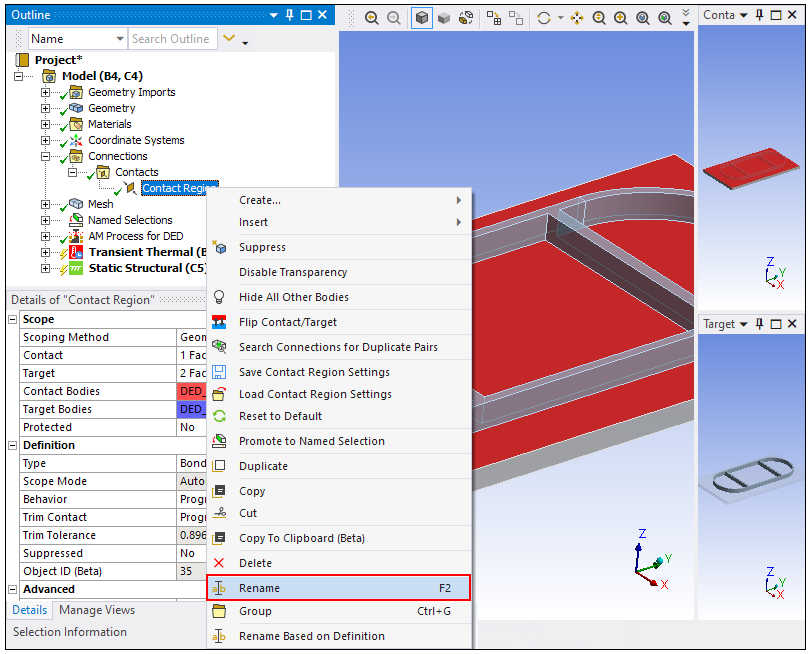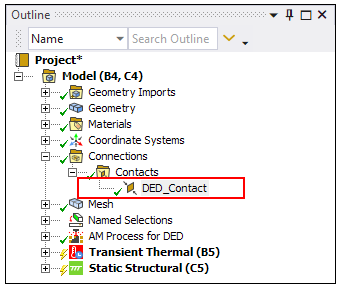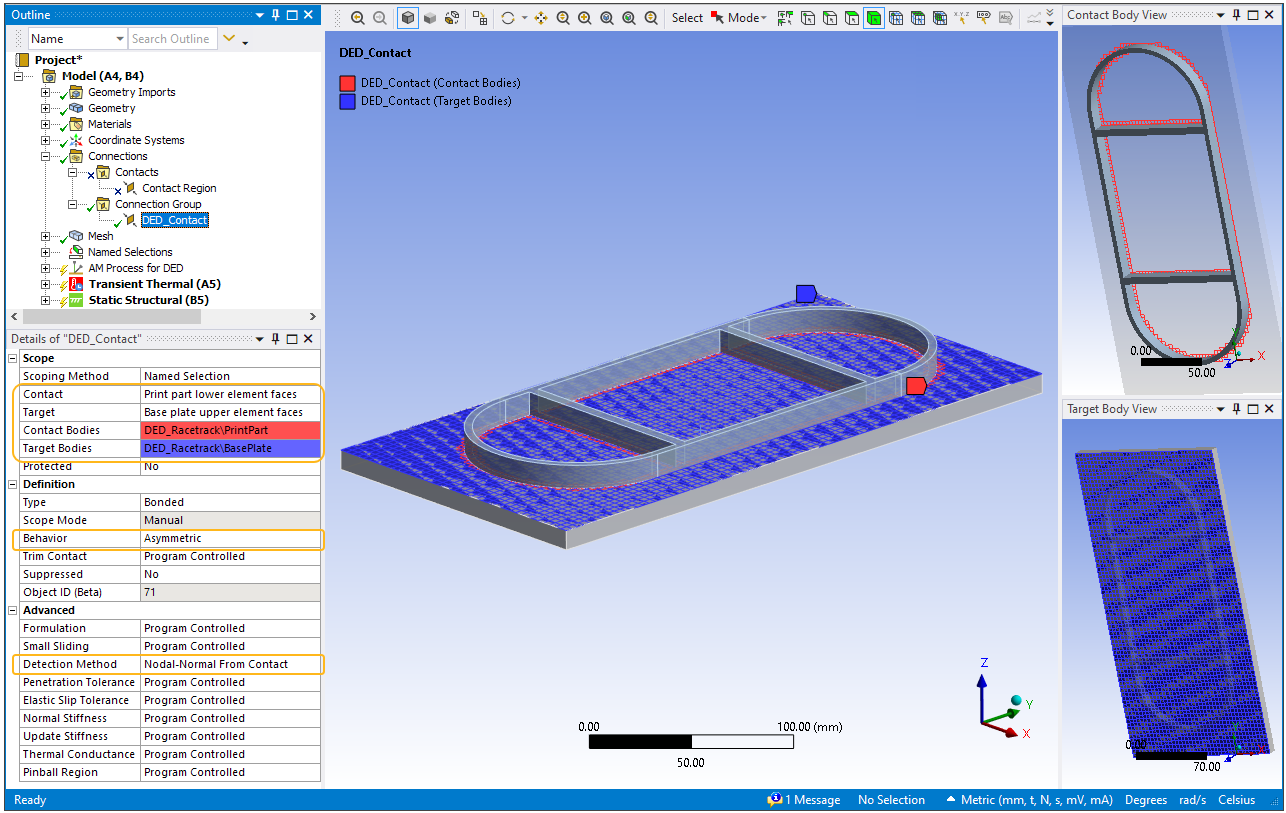Without shared topology between bodies, connections are the mechanism to ensure that the part and the base plate bodies in the simulation are aware of each other and can share data (temperatures and displacements) across boundaries. The connection type that is typically used in DED process simulations is a special case of bonded contact between the element faces on the bottom of the build and the element faces on the top of the base. The name of this contact must be DED_Contact.
In the project tree, a Contacts object is automatically added under Connections with a Contact Region object underneath it when using the DED Process Add-on. The Contact Side is defined as the lower element faces of the print part. The Target Side is defined as the upper element faces of the base plate. You must rename the Contact Region object to DED_Contact. Note that the DED_Contact name is automatically assigned when using the DED Process Wizard.
Important: Even if there is shared topology between the part and the base plate (recommended for simulations with curved bases), you must still include the DED_Contact object in the project tree, as this is required for solution.
Procedural Steps
Rename to DED_Contact object and review options as follows:
Expand the Contacts object and right-click Contact Region. Choose Rename and enter DED_Contact as the new name. This is required for solution of the DED simulation.


The recommended settings (by default since release 2023 R1) for the DED_Contact can be seen below; the Contact surface is the lower element faces of the print part and the Target surface is the upper element faces of the base plate. Two Named Selections defined earlier are used to specify the contact and target. The Behavior is recommended to be Asymmetric with Nodal-Normal from Contact as the Detection Method. This setting is seen to be helpful to eliminate or reduce the negative temperature issue due to thermal shock found in previous releases. Defining contact between build and base can be challenging sometimes. Recommended settings may not work for your case. For more information, refer to the Contact Technology Guide.



